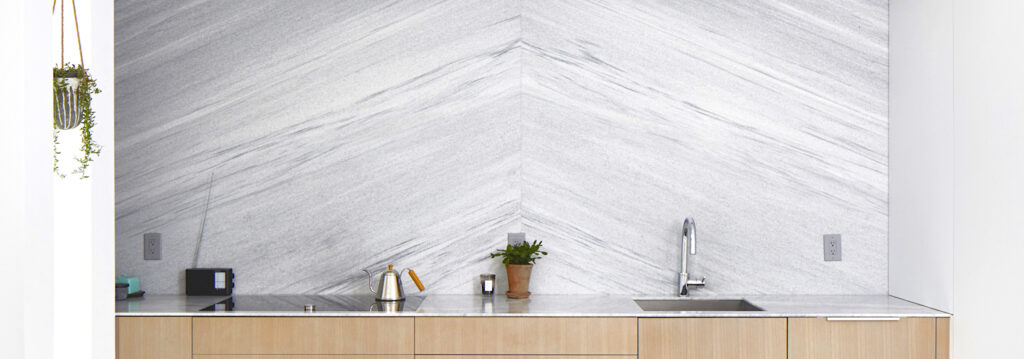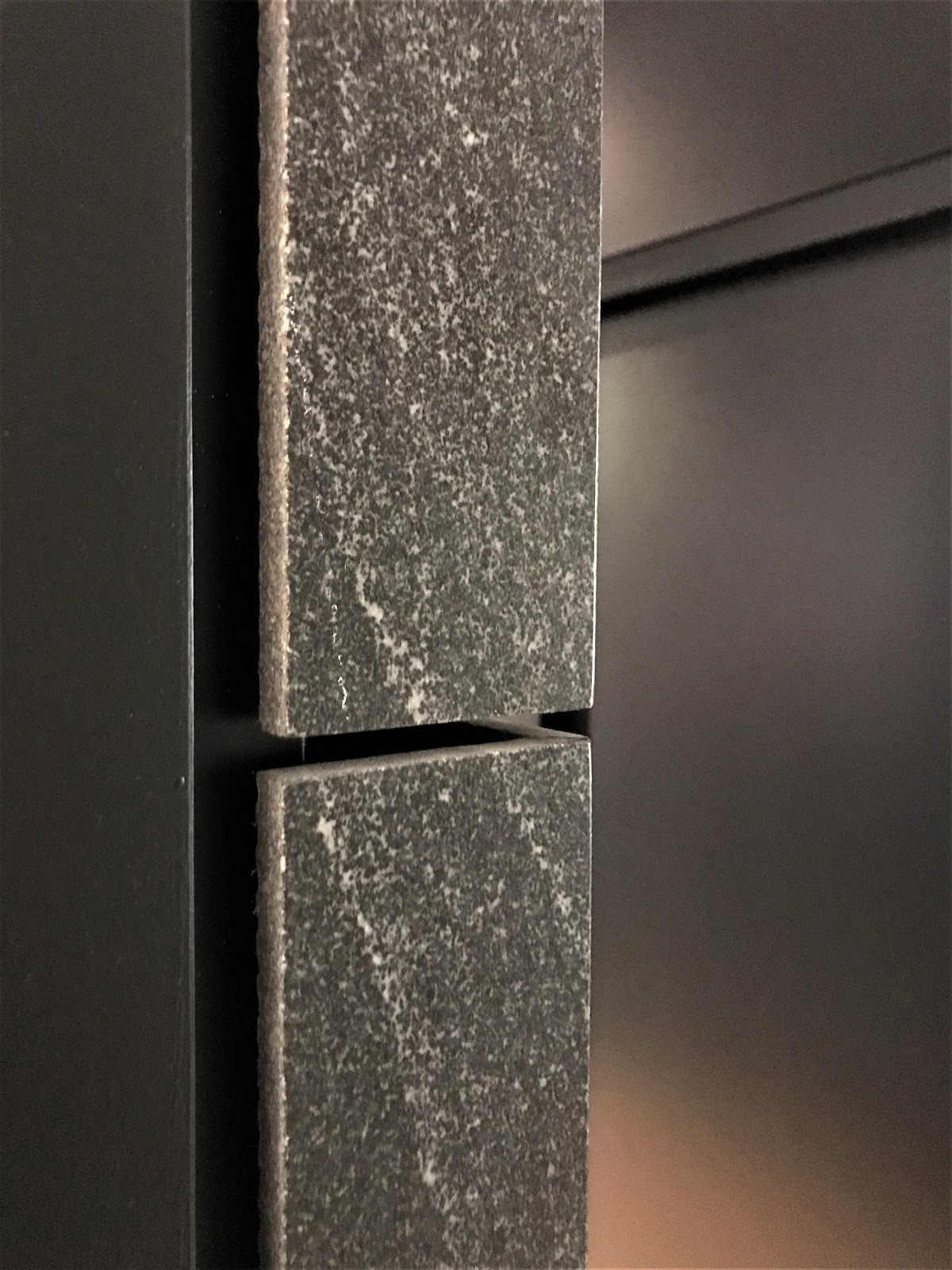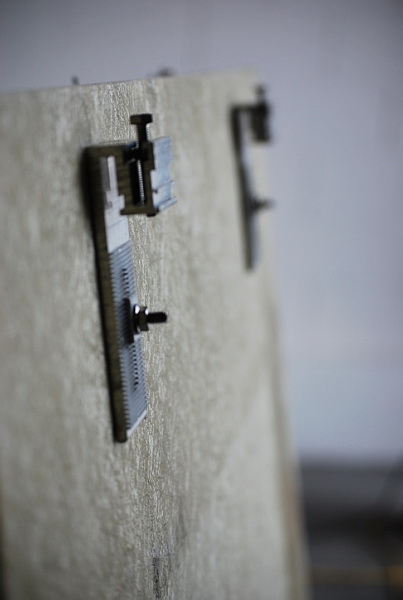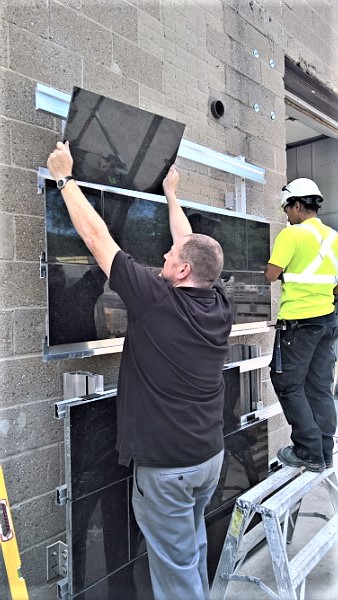
After decades quarrying, fabricating and supplying stone facades, Hugo Vega, Vice President of Sales at Polycor, noticed that the architects he was calling on were lacking a thin stone veneer that was light enough and strong enough for cladding large-scale architectural projects. After some R&D within the company, Polycor went on to release its 1 cm reinforced slabs and Vega returned to his architects in triumph. Only their response was, “That’s great, but we need a way to hang it.”
“The 1 cm product was a great innovation, but there was no way to apply it quickly and easily on large-scale projects,” Vega said.
So the Polycor team dove back into development.
Meanwhile, another response began to percolate in the A&D world. In a bit of a surprise to Vega, the 1 cm slabs sales took off in the residential market where designers and their clients jumped at the chance to incorporate feature walls in showers, full slab backsplashes and seamless vertical fireplaces. (You can see those designs in this lookbook.) At a third of the weight of the usual 3 cm material they were dealing with, fabricators were no longer breaking their backs to muscle a full slab up over a counter to install a backsplash. At 10 times the flexural strength, (thanks to its polycarbonate composite backing) gone was the worry that vertically oriented slabs on the fireplace would crack on install.
The residential market was onboard for thin stone.

An example of a backsplash fabricated from a continuous slab of ultra-thin White Cherokee American marble.
That was great news, but Vega’s customers are typically working on commercial, not residential, specifications. So he continued to mull over this problem of adhering thin stone cladding to the exteriors of architectural projects. From time to time he would bump into the team from eclad at job sites where thicker panels of Polycor marble and granite were being installed with existing eclad systems, structural supports laid over existing facades in a modular fashion. A world leader in stone cladding systems, eclad has been creating and refining cladding systems since the 1990s. They too were seeing the same need in the market as the Polycor team – a fast and efficient way to clad with ultra-thin slabs. And so together the companies decided it was time to team up to bring a comprehensive thin stone cladding system to market.
What they developed is a seamless system that saves time, labor and money: Eclad 1.

Ultra-thin American Black granite appears to float, supported by the invisible Eclad 1 structure.
The new design is based on an aluminum grid system in combination with undercut anchors attached to the back of the 1 cm panels so they remain concealed when using such thin stone. The panels are available up to 9 feet by 5 feet and weigh only six pounds per square foot on average, making the installation process an easier task.
LEARN MORE ABOUT STONE FACADE SYSTEMS

Anchors remain hidden for an unobstructed surface.
The complete system provides pre-drilled lightweight stone panels over a protective cladding structure that makes once heavy stone panels easier to install. Traditional cladding systems rely on thicker stone combined with cumbersome cramps, straps and clips. With Eclad 1 installers simply slip slabs into place and sink screws into the predrilled holes.

An example of a small scale Eclad 1 system mock up.
“It’s basically a different way of installing the stone,” Vega said. “With traditional cladding systems, the anchors have to be installed one-by-one. The process is more labor intensive. On average, it’s twice as fast installing panels using the Eclad grid system.”